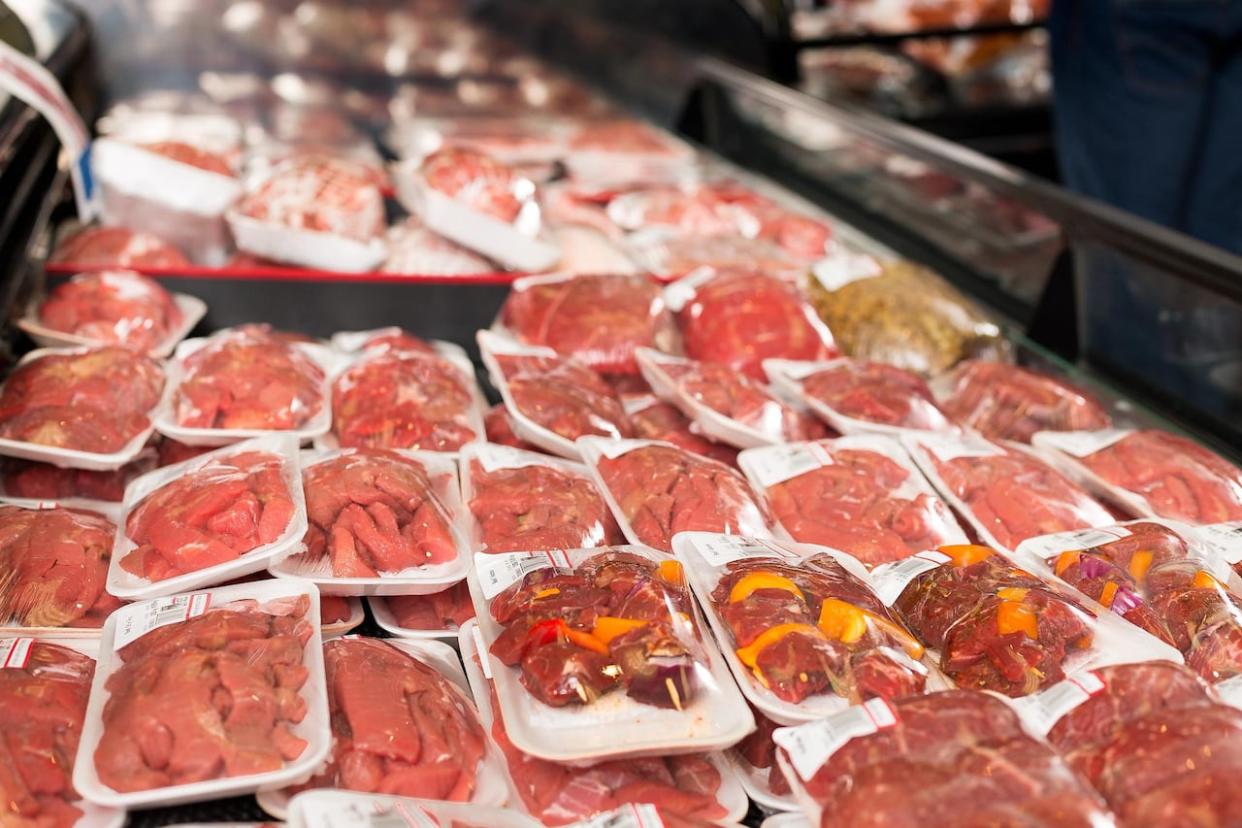Edmontonians turning to student butchers to help take a bite out of inflation

More Edmontonians are looking to student butchers learning their craft to help cut one of the biggest-ticket items on their grocery list: meat.
The NAIT Retail Meat Store sells staples like beef, chicken and pork for 30 to 50 per cent less than most butcher shops and grocery stores.
Chris Bradshaw, an instructor in the professional meat cutting and merchandising program, said he's seen a growing number of people seeking them out.
The store sells meat prepared by students as part of their education, and prices are set at or near cost. That helps the program recoup supply expenses, but it's also a way to make sure the product gets used — they don't want to throw away all those cuts of meat, especially since students need to practice the process more than once.
Bradshaw said the uptick in customers started to be more evident in 2021, as COVID-19 restrictions eased but cost-of-living pressures were getting worse.
"We're definitely noticing every day that there's a handful of new customers on a regular basis that are coming in and asking questions," he said.
Bradshaw said when he started teaching at NAIT, the meat store was open for just a handful of hours, three days a week. They've since added another day, as well as more hours, and they're now preparing a larger storefront that will be open Monday to Friday.
The September 2023 Consumer Price Index shows grocery prices remain high in Canada, up 5.8 per cent year over year.
Meat costs haven't been rising as fast as other categories recently: the average cost is up 4.4 per cent compared to last September, putting it behind the country's overall food inflation numbers.
But University of Guelph food economist Michael von Massow said the higher cost of meat can be more noticeable — and painful — because it was already a pricier portion of the grocery cart.
In the past consumers might not have bothered to spend time hunting for deals and specials, but now, "I think people are saying, 'I can't afford not to,'" von Massow said.
"So they are going to that cheaper beef, that cheaper meat place."
Beef sees steeper price increases
Meat cost increases look different, depending on what you want to buy.
Pork costs climbed just 3.7 per cent year over year, and the average price of ham and bacon actually dropped 7.5 per cent compared to last September.
But the already-high cost of beef is up the most, rising 7.7 per cent over the last year.
Farm Credit Canada vice president and chief economist J.P. Gervais said high feed costs and drought conditions mean ranchers have had to reduce their herd size in past years, making for tight supply.
But he added demand for beef has persisted, despite the high prices.
"The economics behind it would have suggested that we perhaps would have seen a little bit more of a consumer response when it comes to beef, whereas I don't think we've seen all of what we could have," he said.
"Faced with higher interest rates and high inflation, consumers look to stretch their food dollars. And one way to do this is to stay in the same product category, but go with a lower-value item."
Bradshaw said customers are bringing those considerations to NAIT's meat counter too.
"You can see the trends of what their dinner items are," he said.
"Going from before, a lot of steaks and larger roasts, to now a little more cost-friendly items — things that take a little bit longer to cook, but still have a lot of flavour … things like short ribs and stew meat, stirfry meat."


